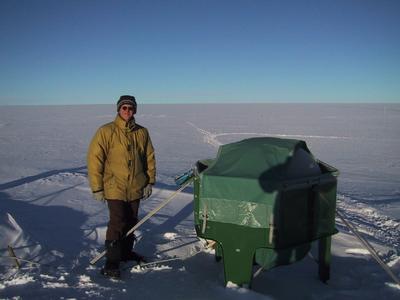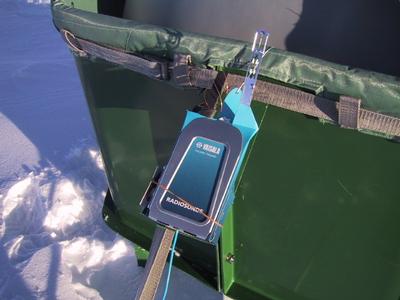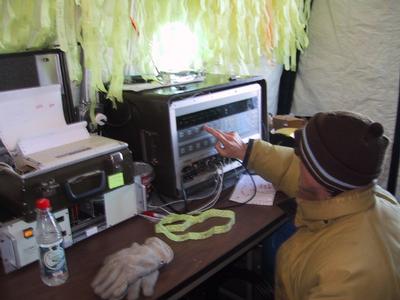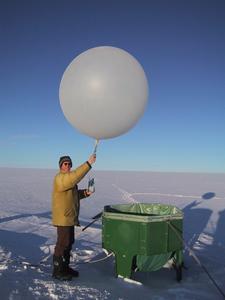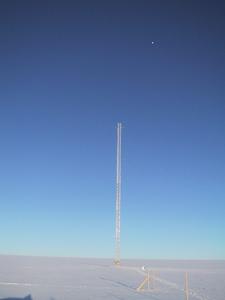
|
28 July, 2001A good day for science experiments. The weather at Summit today was down right tropical! It was + 11 degrees F, sunny and with almost no wind. It was a good day for science experiments in all parts of the camp. By getting up early this morning, I was able to catch a couple of beautiful chunks of rime from the instruments before they sublimated back into the sky. I also kept close track of the lysimeters and saw the mass of each dish diminish throughout the day by about 1 gram or about 1% of the total mass of the dish. It is calm again tonight, so I will suspect the pattern will continue again tomorrow. Jack Dibb, Aaron Swanson and Ted Schultz ran their sun / shade experiments again today. This time they positioned the sun screens horizontally over the snow. They felt that this position would give them better total screening. Markus continued to sample the air and I, the snow. The bright sunlight on the fresh snow should result in high values of H2O2 being released from the snow over the course of the day. I was able to analyze two of the three sets of snow samples that I took today and my initial results seem to be showing this to be the case. (In other words my morning snow samples had higher values of H2O2 than the midday samples taken in the same general area of the snow). Markus saw high H2O2 readings in his air samples. It is exciting to have same day results. This will be our second day of simultaneous air and snow samples, a pattern we hope to keep the rest of the summer here. The most exciting event that took place today was the launching of weather balloons by the Swiss team of Sebastian and Saskia. They launched their helium balloons every three hours all day today and will continue this pattern through the night. These large, white balloons carry instruments that measure the atmosphere at very high levels and send the information back to the computers via radio signal. Sebastian has launched 150 of these balloons from Summit. He is using them to study the atmospheric air masses and their movements. They also measure humidity, wind speed and direction and temperature. Sebastian told me that these balloons are launched all over the world by scientists tracking air mass movement. Each balloon costs roughly 300 US dollars. Sebastian Hab and Saskia Bourgeois are both students at the Swiss Federal Institute of Technology, located in Zurich. Sebastian is a doctoral student and Saskia is working for a masters degree. Both are students of climatology. To learn more about their program check out the web site Swiss institute of technology Saskia’s email address is bsaskia@student.ethz.ch feel free to write her with questions.
Contact the TEA in the field at . If you cannot connect through your browser, copy the TEA's e-mail address in the "To:" line of your favorite e-mail package. |




